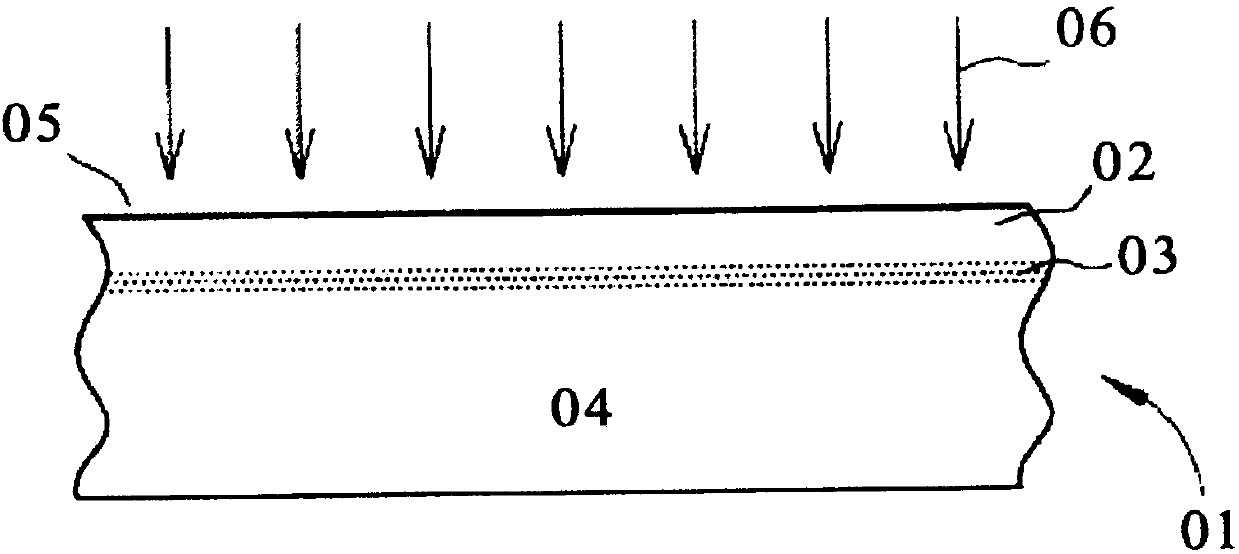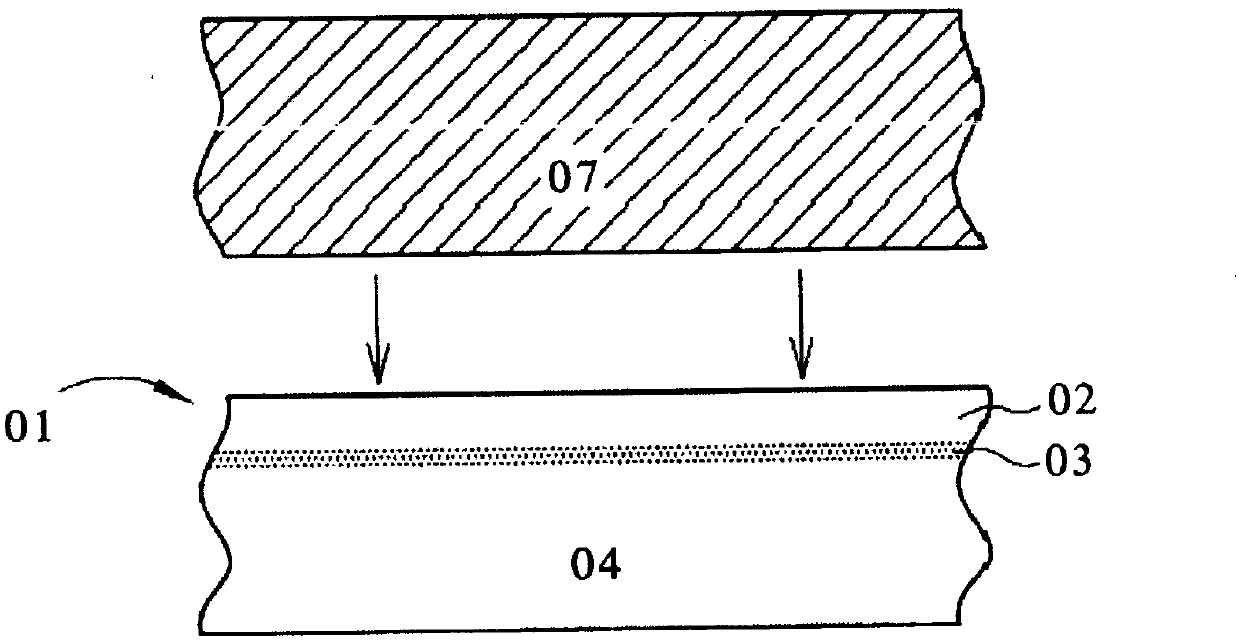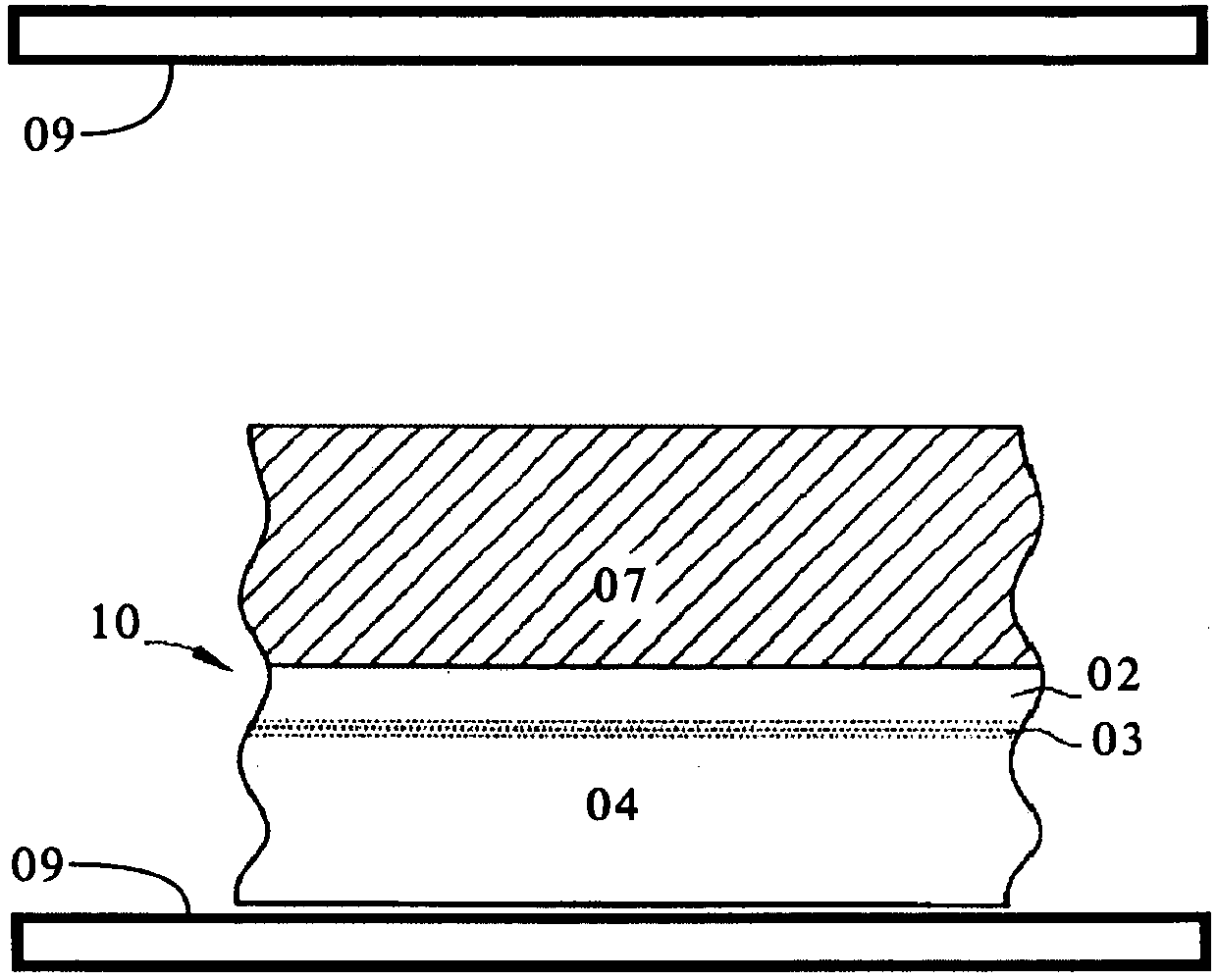Method for manufacturing thin film on substrate
A substrate and thin film technology, applied in the field of thin film manufacturing, can solve problems such as poor uniformity, increased operating costs, and high safety requirements, and achieve the goal of increasing the dielectric constant and loss factor, improving energy absorption efficiency, and increasing the number of nuclei Effect
- Summary
- Abstract
- Description
- Claims
- Application Information
AI Technical Summary
Problems solved by technology
Method used
Image
Examples
Embodiment 1
[0081] The original substrate is P-type, the lattice direction is (100), the resistance value is 10-50ohm-cm, and the surface coverage Silicon dioxide (SiO 2 ), single-sided polished, 8″ silicon wafer, dosed at 4.0×10 16 / cm 2 , the implantation energy is 200KeV, hydrogen molecular ions (H 2 + )injection. The target substrate is P-type, the lattice direction is (100), the resistance value is 10-50ohm-cm, and the silicon wafer is polished on one side. Two silicon wafers were bonded into a bonded structure by plasma-enhanced bonding at room temperature, placed in a commercial adjustable power laser cavity, annealed at a temperature of 100-250°C for ten minutes, and then pressed Then at this temperature, the reciprocal of the wavelength corresponding to the selected laser is used as the center frequency. After 1 to 5 minutes of laser irradiation, a layer of silicon film is separated from the original substrate and transferred to the target substrate with a thickness of abou...
Embodiment 2
[0083]The original substrate is P-type, the lattice direction is (100), the resistance value is 10-50ohm-cm, single-sided polishing, 8″ silicon wafer, after two hydrogen molecular ions (H 2 + ) implantation process, the implantation temperature of the first hydrogen molecule ion implantation is 550°C, and the dose is 1.0×10 16 / cm 2 , the implantation energy is 200KeV; followed by the second hydrogen molecular ion implantation, the implantation temperature is room temperature, and the dose is 4×10 16 / cm 2 , the injection energy is 200KeV. The target substrate is a single-sided polished glass wafer. Two silicon wafers are bonded into a bonded structure by plasma-enhanced bonding at room temperature, placed in a commercial laser cavity with adjustable power, annealed at a temperature of 100-250°C for ten minutes, and then pressed Then at this temperature, the reciprocal of the wavelength corresponding to the selected laser is used as the center frequency. After 1 to 5 minu...
Embodiment 3
[0085] The original substrate is P-type, the crystal lattice direction is (100), the resistance value is 10-50 ohm-cm, the silicon wafer is polished on one side, and ion implantation is performed twice. First inject a dose of 1×10 14 / cm 2 , the implantation energy is 180KeV, boron ions (B + ); followed by an injection dose of 5×10 16 / cm 2 , the implantation energy is 129KeV, hydrogen molecular ions (H 2 + ). The target substrate is a single-sided polished glass wafer. The two wafers are bonded into a bonded structure by plasma-enhanced bonding at room temperature, placed in a commercial laser cavity with adjustable power, and annealed at a temperature of 100-250°C for ten minutes in the cavity, and then followed by At this temperature, the reciprocal of the wavelength corresponding to the selected laser is used as the center frequency. After 1 to 5 minutes of laser irradiation, a layer of silicon film is separated from the original substrate and transferred to the tar...
PUM
| Property | Measurement | Unit |
|---|---|---|
| Thickness | aaaaa | aaaaa |
Abstract
Description
Claims
Application Information
 Login to View More
Login to View More - R&D
- Intellectual Property
- Life Sciences
- Materials
- Tech Scout
- Unparalleled Data Quality
- Higher Quality Content
- 60% Fewer Hallucinations
Browse by: Latest US Patents, China's latest patents, Technical Efficacy Thesaurus, Application Domain, Technology Topic, Popular Technical Reports.
© 2025 PatSnap. All rights reserved.Legal|Privacy policy|Modern Slavery Act Transparency Statement|Sitemap|About US| Contact US: help@patsnap.com



